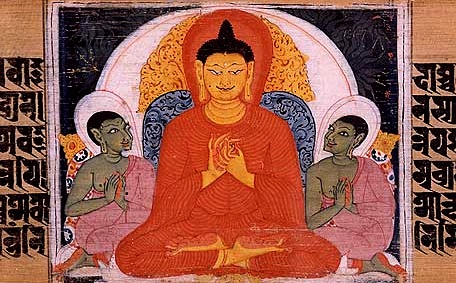The hardest yoga pose
The corpse posture, savasana, is said to be the hardest yoga pose to fully accomplish.Savasana should always be at the beginning and at the end of your physical (hatha) yoga sessions.
Undress and lie down on your back, with your arms beside you and your legs slightly apart - somewhere between 2 inches (5cm) and one foot (30cm) between your heels.
Take a few deep and slow breaths.
Your hands may rest on the floor palm up or palm down, whatever feels more comfortable and, most of all, effortless. Remember you are a corpse.
You also have to find the best position for your head by trial and error, sliding the back on the floor, so that it is closer or further away from the shoulders - but always looking up.
Now, close your eyes and feel.
Feel the touch of the floor on your body, feel gravity's pull down.
And... Relax.
This is easier said than done. As with everything, there are methods.
Begin feeling your right foot. Is it relaxed? Does it tilt naturally to the right side or are you unconsciously trying to keep it up? Let it go. Are there any points of stress on your right foot? Relax them. Are you curling up your big toe? Let it go.
Slowly move your attention - your mindfulness - up your right leg, until you reach the hip. Identify and relax all points of stress. When your right leg is totally relaxed, move to the left foot, leg and hip, slowly, the same way as before.
You get the idea.
Proceed slowly through the buttocks, the pelvis, the abdomen, the thorax, right hand, arm, and shoulder, left hand, arm, and shoulder, and the neck. The trickiest part is probably the head, especially the face. Depending on your head's pitch your jaw may fall a bit when you relax it. If you're very good at this, after relaxing the neck muscles, the jaw, and the tongue, you may even begin to snore! Stay awake.
After letting go all the stress in the facial muscles, take a fast tour of the whole body. It should feel completely relaxed. Corpse-like...
The Buddha advised to contemplate death (maranasati) with each in and out breath - and this is an easy and refreshing way to begin doing it.
Savasana is a good practice before formal sitting meditation because it allows for a smooth transition between the struggle of daily life and the peacefulness of meditation.
For the same reason, you should do it before your hatha yoga practice. Try this:
- When you feel fully relaxed, spread your arms to the sides while inhaling; take three full breaths, then
- Bring your hands to the chest in 'anjali' while exhaling; take three full breaths, then
- Project your arms up while exhaling; take three full breaths, then
- Stretch your arms back while inhaling; take three full breaths, then
- Do the previous steps in reverse order until you are back in savasana.
Just remember two things: slow down and sustain. It is much better to sustain a pose for three breaths than to repeat it three times. This is not calisthenics. Eventually your 'yoga rhythm' will extend to your life.














